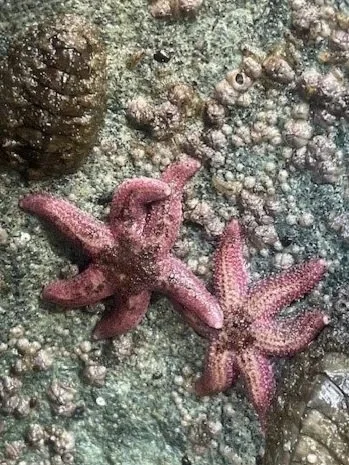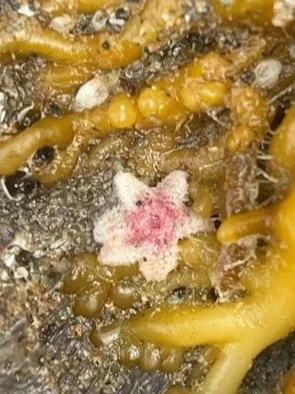Six Ray Sea Star (Leptasterias hexactis)
Two six ray sea stars (photo credit: Brenda Homes-Stanciu)
Other Names: Single-track six-ray star, drab six-armed sea star
Description: Six ray sea stars have, like their name, six rays, but can although occasionally they will have five or seven rays. They are quite small, only reaching a maximum diameter of 10 cm. They range in color from grey, pink, purple and orange, and have white spines along the center line of each arm.
Baby six ray sea star (photo credit: Emma Corliss)
Habitat: Six ray sea stars range from British Columbia to southern California, and are typically found in sheltered rocky intertidal zones often in small beds of mussels or among eelgrass.
Diet: The diet of six ray sea stars mainly consists of small gastropods, such as snails and slugs. They will occasionally eat mussels, chitons, barnacles, sea cucumbers, and limpets.
Tide Pool Tidbits:
Predators of the six rayed sea star include shorebirds and sea otters.
Female six ray sea stars keep their eggs underneath them until they hatch, protecting them from predators.
Six ray sea stars are nocturnal, meaning that they come out at night and hide during the day.
Reference: Biodiversity of the Central Coast



